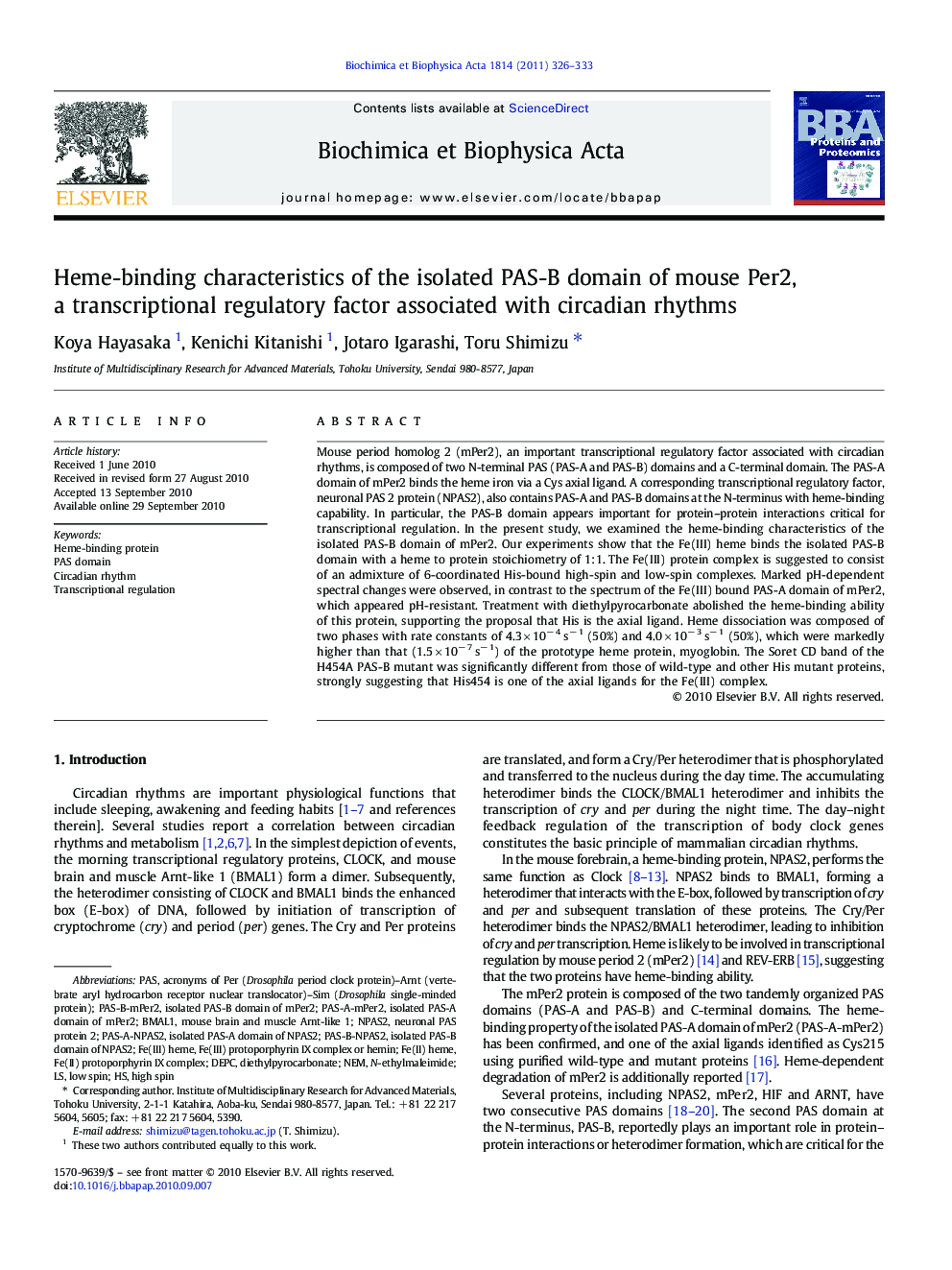| Article ID | Journal | Published Year | Pages | File Type |
|---|---|---|---|---|
| 1178127 | Biochimica et Biophysica Acta (BBA) - Proteins and Proteomics | 2011 | 8 Pages |
Mouse period homolog 2 (mPer2), an important transcriptional regulatory factor associated with circadian rhythms, is composed of two N-terminal PAS (PAS-A and PAS-B) domains and a C-terminal domain. The PAS-A domain of mPer2 binds the heme iron via a Cys axial ligand. A corresponding transcriptional regulatory factor, neuronal PAS 2 protein (NPAS2), also contains PAS-A and PAS-B domains at the N-terminus with heme-binding capability. In particular, the PAS-B domain appears important for protein–protein interactions critical for transcriptional regulation. In the present study, we examined the heme-binding characteristics of the isolated PAS-B domain of mPer2. Our experiments show that the Fe(III) heme binds the isolated PAS-B domain with a heme to protein stoichiometry of 1:1. The Fe(III) protein complex is suggested to consist of an admixture of 6-coordinated His-bound high-spin and low-spin complexes. Marked pH-dependent spectral changes were observed, in contrast to the spectrum of the Fe(III) bound PAS-A domain of mPer2, which appeared pH-resistant. Treatment with diethylpyrocarbonate abolished the heme-binding ability of this protein, supporting the proposal that His is the axial ligand. Heme dissociation was composed of two phases with rate constants of 4.3 × 10− 4 s− 1 (50%) and 4.0 × 10− 3 s− 1 (50%), which were markedly higher than that (1.5 × 10− 7 s− 1) of the prototype heme protein, myoglobin. The Soret CD band of the H454A PAS-B mutant was significantly different from those of wild-type and other His mutant proteins, strongly suggesting that His454 is one of the axial ligands for the Fe(III) complex.
Graphical AbstractFigure optionsDownload full-size imageDownload high-quality image (63 K)Download as PowerPoint slideResearch Highlights►The Fe(III) heme binds the isolated PAS-B domain of mPer2. ►The Fe(III) complex consists of an admixture of 6cHS and 6cLS complexes with His as the axial ligand. ►Results of chemical modification suggest that His is the axial ligand. ►From the Soret CD band, it is suggested that His454 is one of the axial ligands for the Fe(III) complex. ►The coordination structure of PAS-B is different from PAS-A.
